Chilling Historical Photos That Will Blow Your Mind
History is far stranger than you or I could ever imagine. People had different ideas and science was being explored in every way imaginable. The world was being analyzed and old ideas were dying out or changing their flavor.
History Is Strange

As you go through these incredible photographs, keep an open mind. The times were different and the morals of the past are not like the morals we have today, which means that some of these images are sure to boggle your mind.
We have grown as a people and know that certain things, like child labor, are simply wrong. Some photos have a history behind them while others are a total mystery that no one living can explain.
MGM’s Lion

MGM’s roaring lion at the beginning of their films is iconic. Every moviegoer gets a thrill when he or she hears the sound of the roar and gets goosebumps just knowing that the movie is finally about to start.
Different lions have been used since 1917 and if you look at different images of the MGM lion, you can spot the subtle differences between them. The first lion they ever used was originally named Slats. To make him more popular, they renamed him Leo. Leo retired in 1928 and was replaced by Jackie. Both of these lions were made to work for a few years and both died just a few short years after their retirement.
Redwood Deforestation

The Redwood Forest is located in California and is the home to some of the largest trees on earth. During the mid-1800s, men traveled to California for the gold rush, but few made any gold. Some men saw the Redwood Forest and found a different kind of gold.
Those who could not make it in gold mining found their fortune in cutting down the beautiful, immense trees of the Redwood Forest. When they first began, there were over two million acres of huge redwoods. By the time they stopped and the remaining forest was preserved, there were only a little over a hundred thousand acres left.
Warsaw Ghetto

Warsaw, Poland’s capital, had a rich Jewish population and culture before World War II. It was the second-largest city in the world and had 1.3 million inhabitants.
Nazi Germans invaded Poland in 1939 and soon after forced the Jewish population to wear the blue Star of David on their arms. By 1940, the Germans forced the Jewish population in Poland to move to Warsaw. A wall was built up around the city and it was topped with barbed wire to prevent anyone from escaping. Residents in the Warsaw ghetto were faced with starvation and infectious diseases. In this photo, we see some young residents.
Mount Rushmore

It took about 400 men and women to create Mount Rushmore in inhospitable conditions. It did not matter if it was too hot or bitter cold, these brave workers started off their mornings by climbing up 700 stairs to reach the worksite. Only then could they punch their cards and begin their work.
Because the building was going on during the Great Depression, workers did not complain about the conditions. In fact, one worker boasted that he was earning $8 a day to work on the historical memorial. The men had to hang from great heights in “chairs” supported by 3/8 inch cables to carve the faces from the rock.
Buying Rocks

While Mount Rushmore was being built, visitors would come to see the progress. The view from the ground was amazing and most visitors wanted to come away with something to remember the occasion by.
The hoist operator was pretty ingenious when it came to the visitors. While he was at the bottom, he would have a piece of the rock from the Mount Rushmore project with him. Visitors would ask to buy the rock from him. They might only offer $2 for the chunk of rock, but the hoist operator would tell them that he really couldn’t sell it. He was holding onto it for someone else. The visitors would then offer up $6 and the hoist operator would sell it to them. After they left, he would call up for another chunk of rock to be sent down to sell to the next visitor.
Iconic Image Of The Great Depression

There is no single photo that describes how the Great Depression affected mothers and children than the photo of Florence Owens Thompson. Florence and her family were migrant farmworkers during the Depression. After beets, she and her family traveled on U.S. Highway 101 to find work picking in the lettuce fields.
Their car broke down and they coasted onto a pea farm. There were around three thousand other people camping there, hoping to work. Unfortunately, the crops were destroyed by freezing rain and there was no work or money. The photo is from the pea camp. She had just cooked a meager meal for her own children when other children, starving, came up and asked her for a bite of food.
Boston Marathon

History is full of images of women trying to accomplish something that men say they should not be able to do. Sometimes these women succeeded and other times they were beaten down, verbally or physically, and told to mind their place in society.
The 1967 Boston Marathon was a major event in women’s history. It was the first time a woman ran in the Boston Marathon. Kathrine Switzer was a numbered entry even though women were not allowed to officially compete in the run. She registered her name under her initials, disguising her identity until the day of the marathon. When she started to run, men tried to physically remove her from the race.
RMS Titanic Iceberg
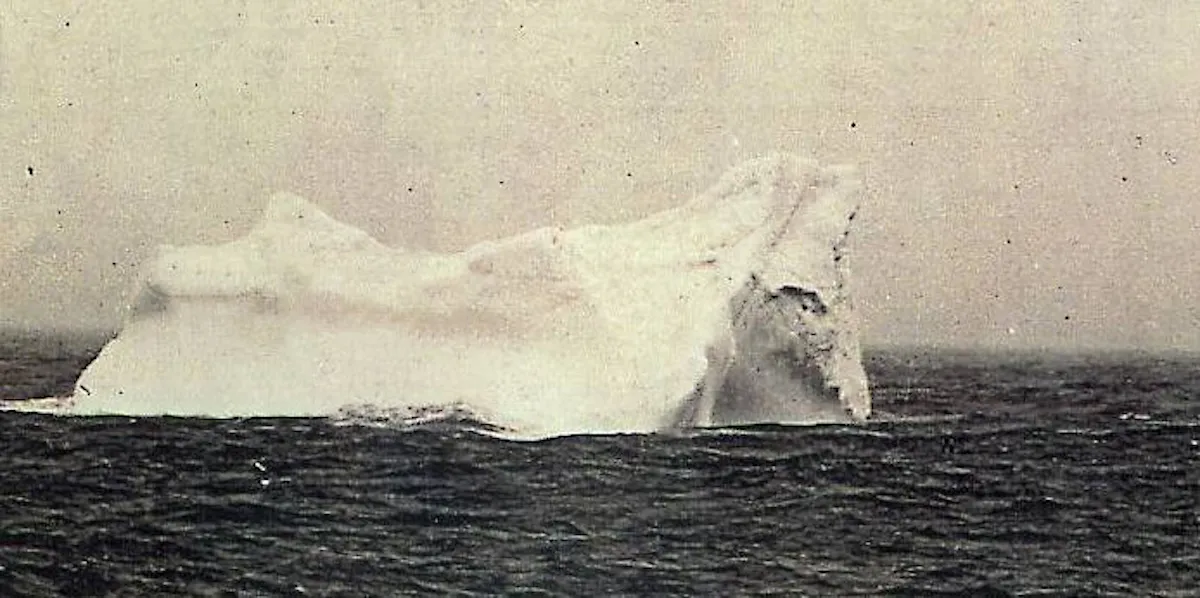
The Titanic was supposed to be unsinkable. The wealthy rushed to get a spot on the massive ship for its maiden voyage while below decks were stacked with poor people immigrating to the United States. Over two thousand people boarded the ship on April 10, 1912, not knowing that the ship was doomed.
On the morning of April 15, 1912, the Titanic struck the iceberg in the photo. There were not enough lifeboats to get everyone off the ship and the poor people below were locked in. Over 1,500 people died from the sinking of the Titanic, including the captain of the ship, Edward John Smith.
Little NAP
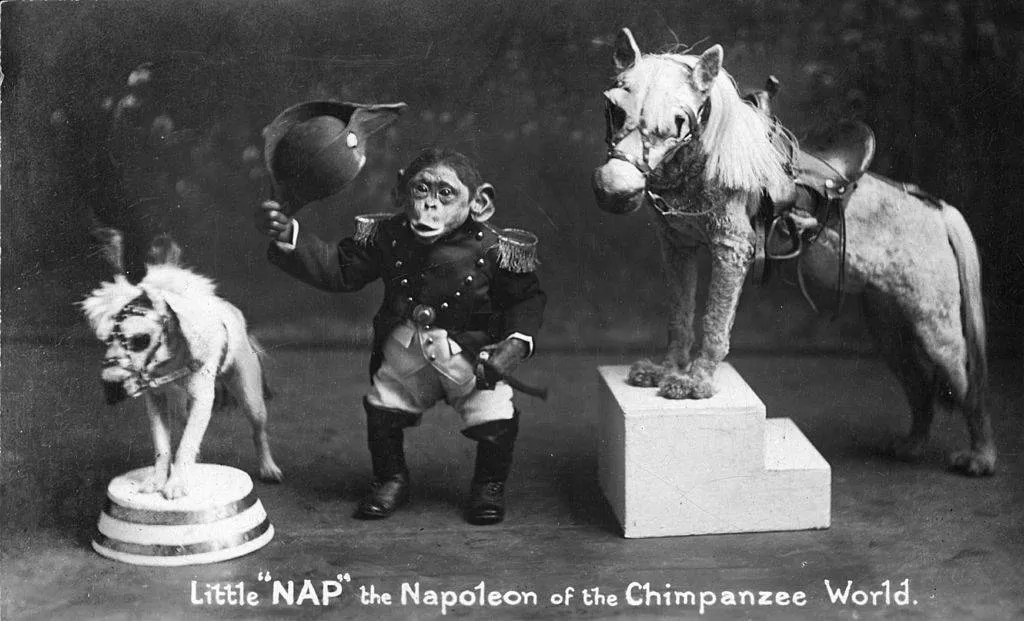
Little NAP was the “Napoleon of the Chimpanzee World.” This little chimpanzee, a female, was dressed and posed to make fun of Napoleon Bonaparte in the early 1900s.
Napoleon was a French military leader who conquered most of Europe in the 1800s. He was described as shrewd and extremely ambitious. He was also hated in many parts of the world, which is why the chimpanzee was dressed up to make fun of him. Unfortunately, Napoleon Bonaparte did not live long enough to see his chimp twin. He died in 1821 at the age of 51.
Nazi Doctor Schilling
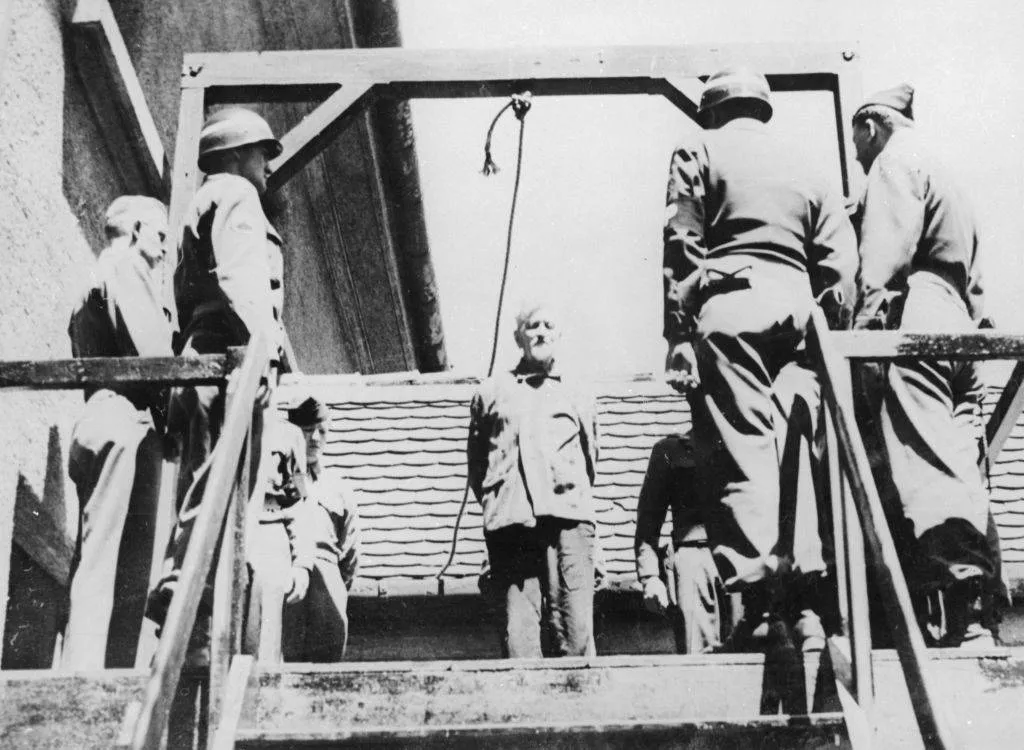
This photo shows the moments leading to the hanging of Dr. Klaus Karl Schilling. At the Dachau camp, he experimented on over a thousand prisoners by injecting them with malaria. His goal was to find a vaccination against malaria.
After the war, Dr. Schilling was tried for the death and mistreatment of foreign nationals. He was convicted and sentenced to die by hanging. There were also 40 other people at the camp who were given the same charges. All forty people were found guilty of the charges. Thirty-six of them were hung. The remaining four people were sentenced to hard labor, either for life or for ten years.
Children For Sale

In 1948, this picture was printed in the newspapers. The mother, Lucille Chalifoux, hides her face in the photo because the sign was for real. She was selling her children for $2 apiece. Her husband was out of work and the family was about to be evicted from their apartment.
While we can all agree that the selling of children is a horrible act, it was also very common in the United States. Fathers would leave the family or lose jobs. Mothers were paid less than half of what men were paid to work and could not be the sole breadwinners in the family. When things got dire, they sold off their children or dropped them off at the orphanages.
Hindenburg Disaster
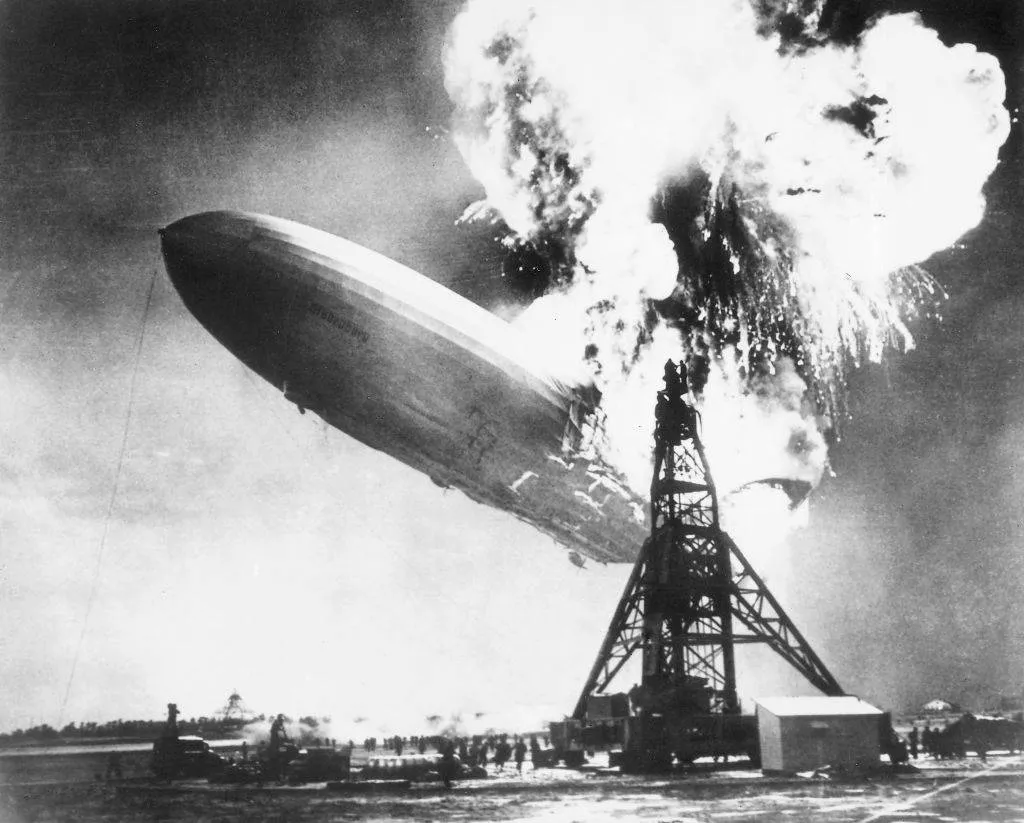
On May 6, 1937, the Hindenburg, a German passenger airship, erupted into flames when it was attempting to dock in New Jersey. There were 97 people onboard the ship. Of those, 35 died in the fire and one worker on the ground was killed.
The creepiest part of this tragedy is that it was caught on camera. A newsreel was filmed on the spot. Instead of having a perfect landing to show the public, the film captured the massive ship burst into flames and crash to the ground. There are many theories about how the ship caught on fire, from a cigarette to carelessness by a crew hand.
Iron Lungs
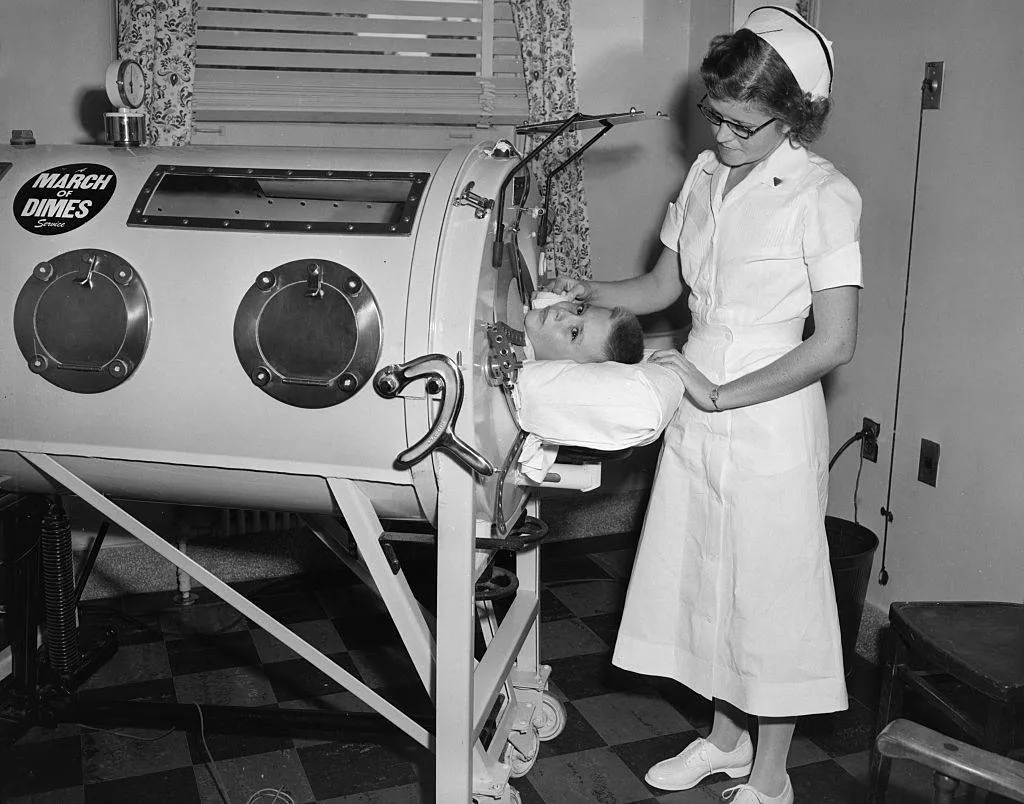
In the early 1900s, polio was called the baby plague because it affected so many infants and young children. At that time, they did not know what caused polio or how it was spread. Families were terrified whenever an outbreak hit their area and they would quarantine themselves and their children in the hopes that no one would get the dread disease.
Doctors tried just about everything they could think of to cure those with polio, including placing victims of polio in steel tanks. Iron lungs were widely used and patients might be stacked in the tanks, one above the other.
The Elephant Man
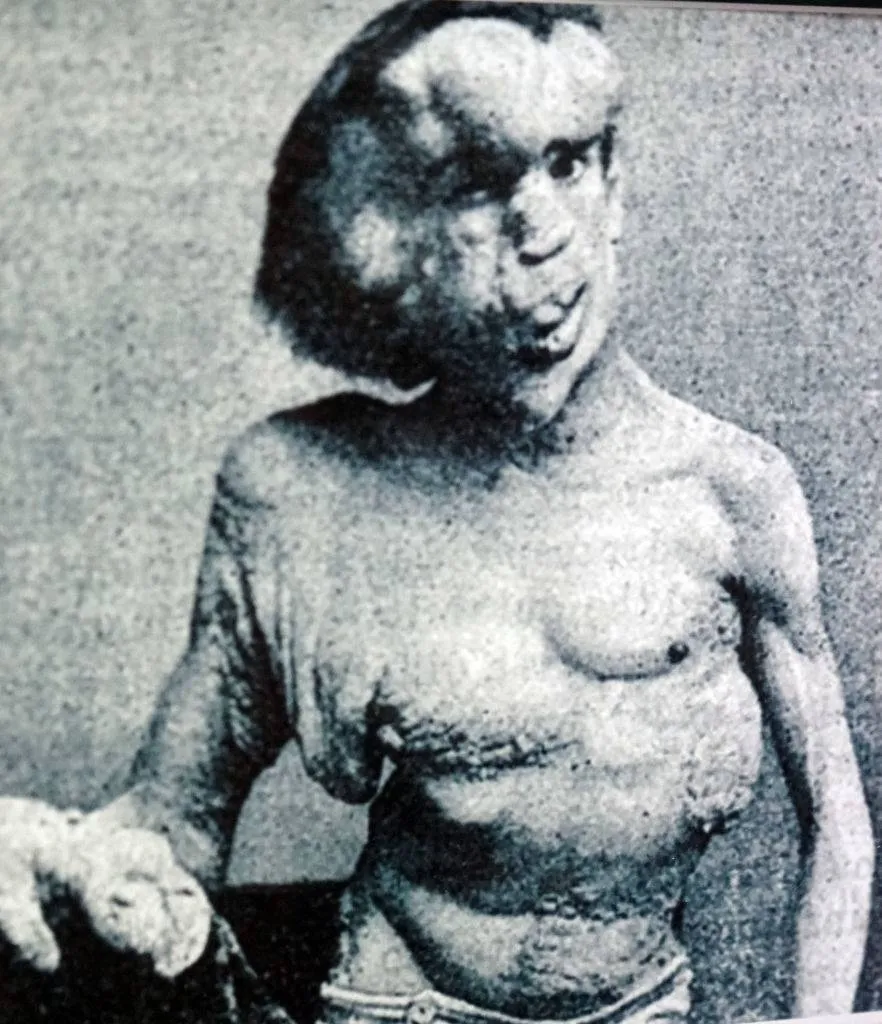
Joseph Carey Merrick, commonly known as the Elephant Man, was born severely deformed. Because it was the 1800s, he was placed in a freak show and shown off for a price. Later on, he went to live at the London Hospital where he was displayed as a medical oddity.
Needless to say, Merrick lived a life full of cruelty. His mother died when he was only nine and his father did not want him. Merrick tried to make it in life in the general workforce, but he soon succumbed to the world of the freak show where he could make a small amount of money. He lived a short life and died at the age of 27.
Ice Pick Lobotomy

Walter Freeman is considered the Father of the Lobotomy, what is also called the ice pick lobotomy. This man invented a new way to destroy a person’s brain, often making the patient worse than what he was before the procedure.
The procedure was performed while the patient was awake. A tool, looking like an ice pick, was placed in the corner of the patient’s eye and was hammered into the brain. A swoosh, swoosh, and Freeman scrambled the front of the patient’s brains. The result was often a docile patient. Sometimes the patient would die from the procedure. Other times, the patient would go onto commit suicide.
Vladimir Komarov Falls From Space

Soviet test pilot Vladimir Komarov was among the first aerospace engineers and cosmonauts to explore outer space in the 1960s. Although he was declared medically unfit for spaceflight twice, Russia selected him to command space missions and eventually he became the first Soviet cosmonaut to fly into outer space twice.
Sadly, he was also the first human to die in space. The space capsule he was on, the Soyuz 1, crashed after re-entry, and Komarov plummeted to earth at a ridiculously high speed. This is what his body looked like when they recovered him. Pretty gruesome, to say the least.
Gas Masks During WWI

Of the one million British horses enlisted in the war effort, only 62,000 returned home. Poisonous gases such as phosgene hurt the eyes and lungs of people and animals during the war, so soldiers did their best to protect the mules, horses, pigeons, dogs, and other animals that were used.
Although the use of poisonous gases was banned, 124,000 tons of gas were produced by the end of World War I. The French were the first to use chemical weapons during the Great War, using the tear gases, ethyl bromoacetate, and chloroacetone. The Germans fired back with army shells filled with a chemical irritant which caused uncontrolled sneezing. They also attacked the Russians with mustard gas, which was barely recognized by the human nose, but caused serious blisters both internally and externally.
Escobar And Son In Front Of The White House

In this rare photo, taken in 1981, drug kingpin Pablo Escobar and his son stand in front of the White House. Escobar was the legendary "King of Cocaine" smuggling an estimated 80% of all the cocaine found in the United States at one point in his crooked career.
The drug lord's illegal efforts scored himself $21.9 billion annually! Can you imagine? He is still named the wealthiest criminal in history, with a known net worth of $30 billion by the early 1990s. He didn't get to enjoy it for long, however. In 1993 Escobar was shot and killed by Colombian National Police in his hometown, just before his 44th birthday. His son has since changed his name to Sebastian Marroquin.
The Most Loyal Dog… Ever

A dog who lived in Japan during the 1920s and 1930s is still remembered today for a remarkable trait he had. Although many dogs are loyal, the story of this one will melt your heart. Hachikō, a farm-born Akita pup, was born in 1923. A university professor adopted him the following year and the two were close friends, with Hachikō greeting the man at the train when he returned home the next day.
Sadly, the professor died suddenly in 1925. Ever loyal, Hachikō continued to make his way to the train station every day for the next nine years, nine months and fifteen days. Other commuters began noticing and they brought him food to eat. In the above picture, the dog has been discovered dead. He is surrounded by the professor's wife and station staff who are mourning his death. To this day, Hachikō is an enduring symbol of loyalty and love.
Muhammad Ali, Lifesaver

When the world lost Muhammad Ali in 2016, it lost a true hero. Not only was Ali (born Cassius Clay) one of the most gifted and talented boxers out there, but he was also a truly compassionate person who was not afraid to stand up for what was right.
One prime example of Ali’s compassionate nature took place on the ninth floor of a downtown Los Angeles building in 1981. A suicidal man was threatening to jump and end it all. Ever the hero, Ali managed to talk the despondent man out of killing himself. He repeated, “You're my brother. I love you and I wouldn't lie to you. You got to listen. I want you to come home with me, meet some friends of mine.”
Opening Tut’s Tomb, 1923

Archaeologist Howard Carter got the thrill of his life in 1923 when he discovered and entered, a tomb in Egypt that was believed to be the burial place of the ancient Pharaoh Tutankhamen. Tut, who had lived around 1400 B.C. and had died while still young (in his teenage years) and his tomb had been sought-after prizes for the archaeological community.
In this photo, we see Carter gingerly caresses the fine details carved into Tut’s open sarcophagus in 1923. The sarcophagus consisted of three nested coffins. The interior one, solid gold, contained King Tut’s mummified remains.
Marlon Brando With Martin Luther King, 1968

This isn’t necessarily a pairing one might immediately expect to see together in a historical photo. One man a civil rights leader and one a movie star. But luckily we do have this photo of Dr. Martin Luther King, Jr. speaking with Marlon Brando.
It turns out the two were close allies in one of the most pressing social issues of their time. Brando actively supported, with finances and money, the Civil Rights Movement and was present during King’s “I Have A Dream” speech. After King’s 1968 assassination, Brando even took a break from acting to continue King’s important work.
Teenage Vladimir Putin In The 1960s
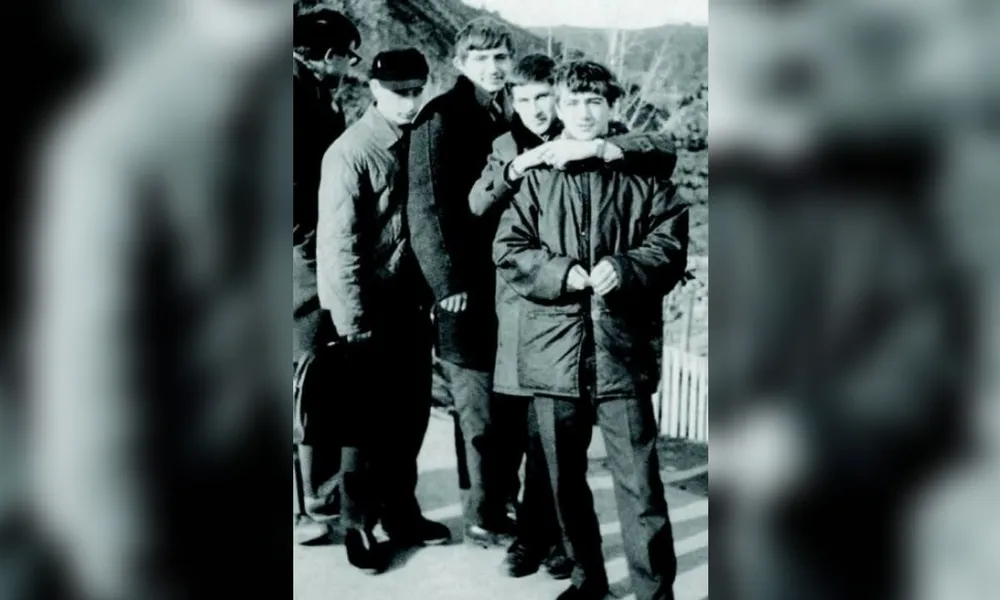
This black and white photo, seemingly depicting a normal group of teenaged friends, contains a future world leader. The teenager in question stands second from the left and appears to be scowling. This is a chilling image of Vladimir Putin as a kid in the 1960s.
Putin graduated from Leningrad State University before serving in the KGB (Russian foreign intelligence) for 16 years. He joined politics, quickly rose through the ranks and is now the notoriously harsh President of the Russian Federation.
Madonna, Sting, and Tupac
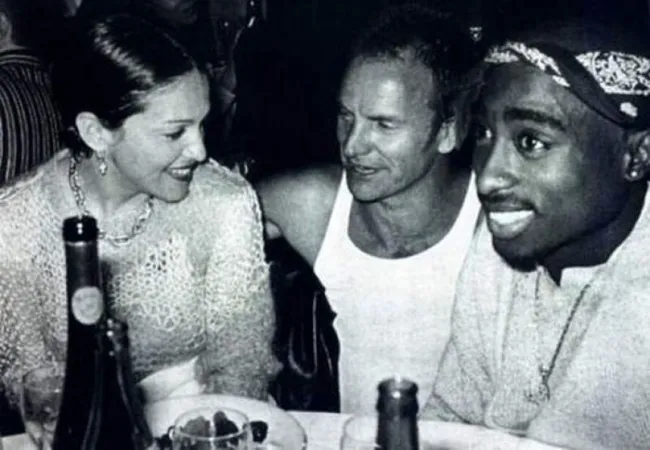
It’s now become common pop culture knowledge that Madonna and the late Tupac Shakur once dated. This fact came to light in 2014, when actress Rosie Perez revealed details on The Wendy Williams Show, of all places. Tupac and Madonna met in 1993, at the Soul Train Music Awards.
Here, the pair is seen hanging out with another musical icon, Sting. This rare photo is from a New York City dinner hosted by Vogue magazine in 1994. Tupac was tragically murdered in Las Vegas, in a still-unsolved drive-by shooting, just two years after this picture was taken.
Joseph Goebbels’ Wedding, With Hitler in Attendance, 1931
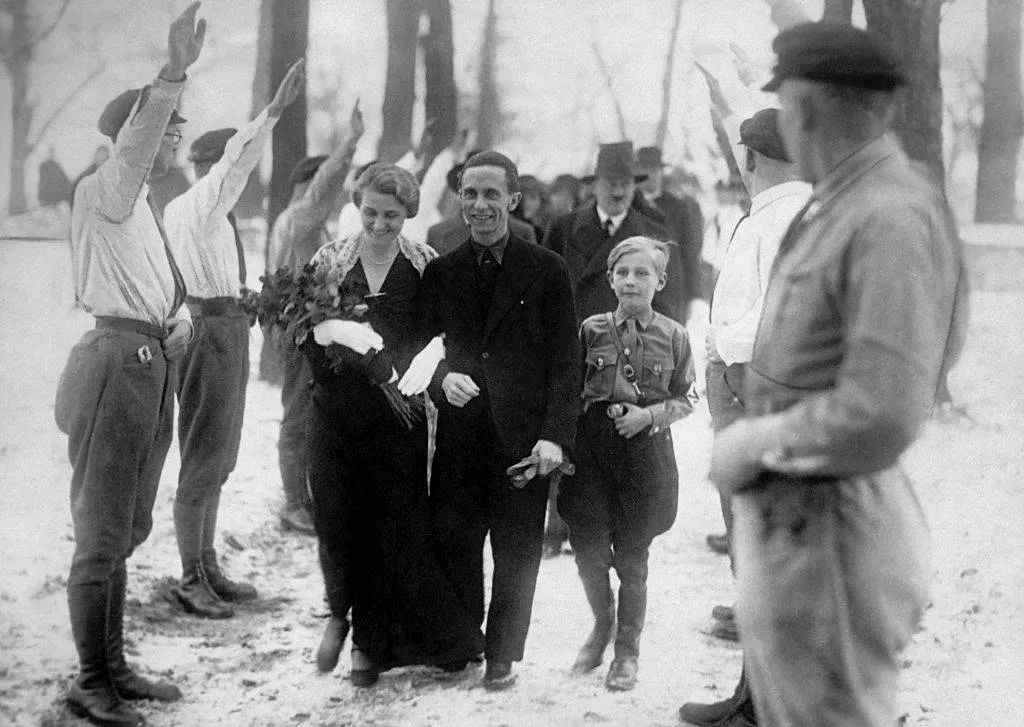
Joseph Goebbels, one of Adolph Hitler’s closest confidantes and friends, served as Nazi Germany’s Reich Minister of Propaganda from 1933 to 1945. He was a cruel man and spent his energies lobbying for harsher treatment and discrimination of Jews during the Holocaust.
Goebbels married Magda Ritschel in December 1931. Hitler was a witness to the affair and is pictured following the couple through the snow in the above photograph. Joseph and Magda went on to bear six children together, although Joseph was not faithful and had several extramarital affairs during their time together. On May 1, 1945, the couple hired a dentist to kill their children with cyanide, and the two then committed suicide.
Conspirators of Lincoln Assassination Moments Before They Are Hanged
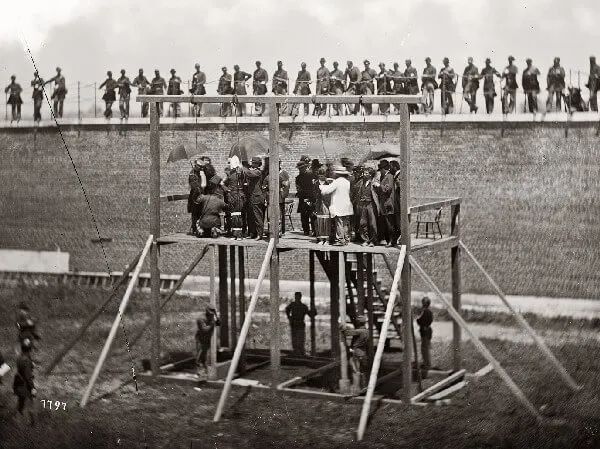
Although they are not always discussed, there were two other individuals that were involved with the Lincoln assassination. Originally, John Wilkes Booth, George Azterodt and Lewis Powell were going to kidnap Lincoln for the ransom of Confederate prisoners. This plan was foiled once the war had been lost.
The plan then changed and Booth was going to kill Lincoln at the theatre, Azterodt would kill Vice President Andrew Johnson, and Powell the Secretary of State William Seward. While Booth went through with the plan, Azterodt didn't, and Powell attempted and only seriously injured Seward. Above is a picture of Powell, Atzerodt and two other conspirator moments before they are hanged.
The Seal On King Tut's Tomb
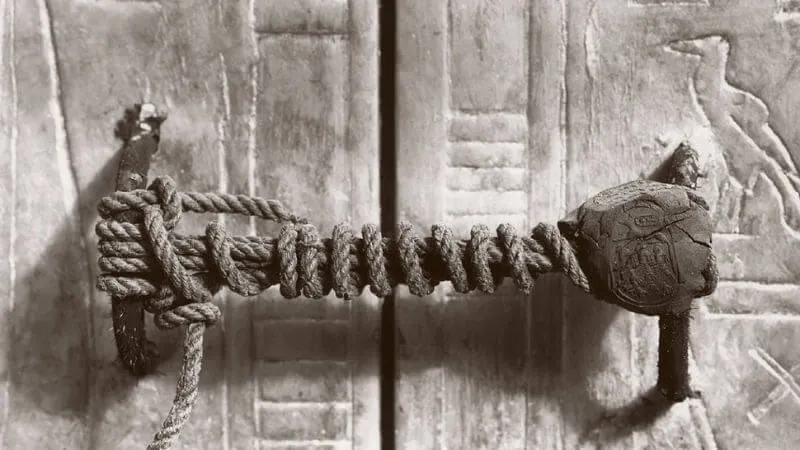
This is a photograph of one of the five shrines to the entrance of King Tut's Tomb. The photograph was taken in 1922, and the seal had remained untouched for 3,245 years. King Tut's tomb was a later discovery because it was covered by the debris of Ramses IV which was located above the entrance.
However, the outermost shrine of the pharaoh had been opened twice in ancient times, this door in the second shrine remained intact. Because this was unbroken and carried the necropolis seal, it indicated that the pharaoh's mummy would be untouched and unharmed.
1930s Baby Cages
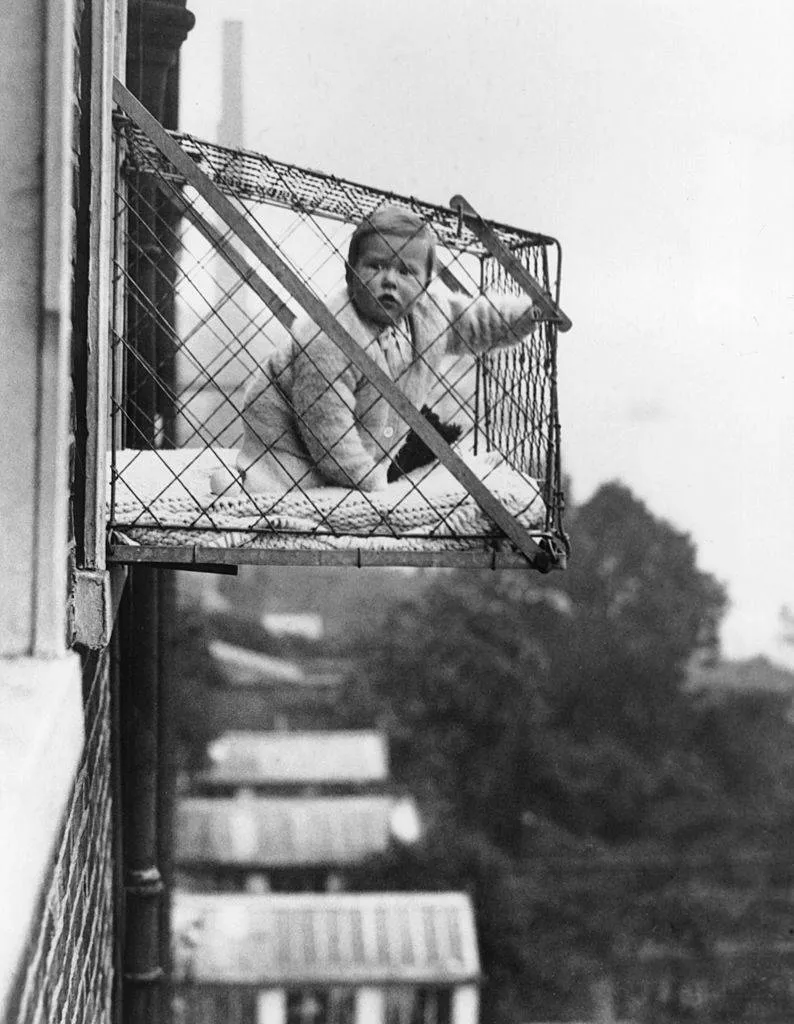
In the 1930s, these baby cages were considered to be a good idea. This is so because it allowed the children to get fresh air and sunlight. Although today this image may be horrifying, one must remember that those living in the 1930s did not have most of the luxuries that we have today to ensure the health, comfort, and safety of their children.
It must have been an interesting sight to see baby after baby, dangling from out of an apartment building's windows. They sure seemed to have put a lot of trust in the structural integrity of that product back when it was in use.
First Class Lounge On The Titanic Before It Sank

This is a typical lounge hat would have been available to first-class passengers aboard the Titanic. Generally, it was accessed by the wealthiest of guests who utilized rooms such as this to socialize and have refreshments.
It's eerie to think that the last care in the world for these people while sitting in this exact room was the ship sinking. It's also ironic that all of the luxury and labor put into that room now lies at the bottom of the Atlantic Ocean.
Beach Patrol Making Sure Girls Bathing Suits are the Appropriate Length

In the 1920s, if you were a woman going to enjoy a nice day at the beach, it wouldn't be unusual to be approached by a beach patrol or the police who would then measure your bathing suit to make sure it was within the legal limits. If it was not, the woman would then be fined.
This picture shows that not even 100 years ago, it was okay to tell women what and what they were not allowed to wear, even at the beach. It's also ironic that the woman is only allowed to show so much skin, whereas the man can willingly touch the parts of her body that aren't supposed to be exposed apparently.
The "Knocker-Up"
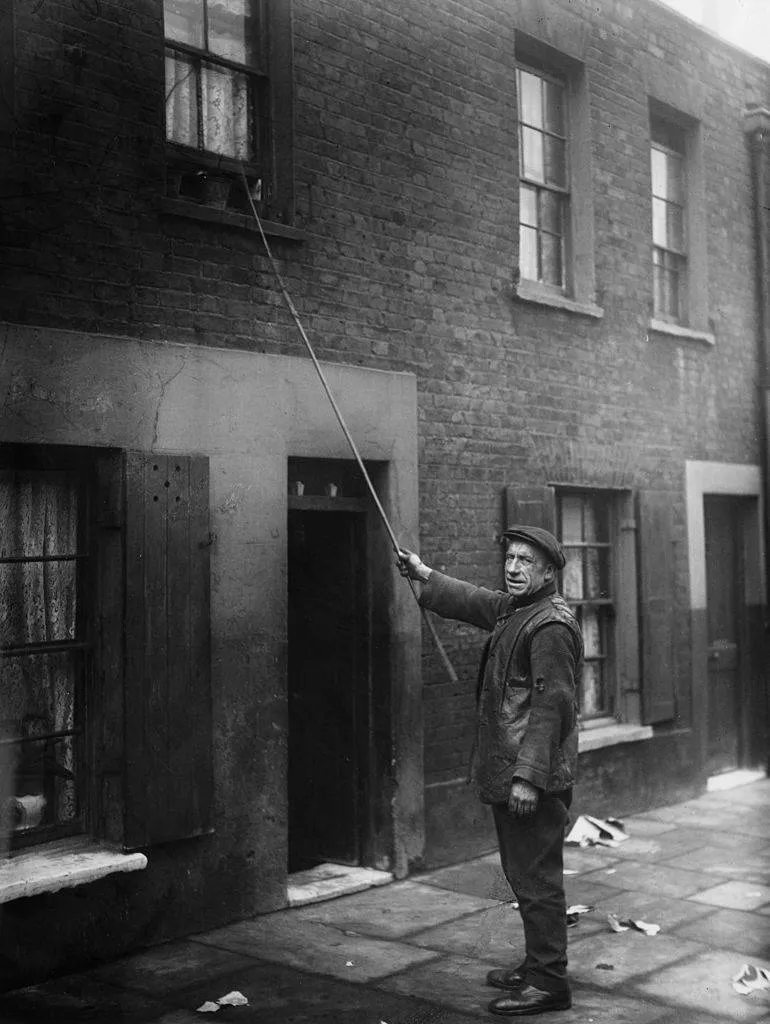
This poor soul was probably the most hated individual in the community. Commonly referred to as a "knocker-up," their job was to go to wake up sleeping people to make sure they got to work on time. This was necessary during the time of the Industrial Revolution since alarm clocks were not cheap or reliable.
The tool they used was called a "snuffer-outer" which was used to extinguish gas lamps in the morning and reach second-story windows. This job was commonly performed by elderly men and women or police constables to supplement their pay by working in the early mornings. The real question is who woke up the "knocker-upper"?
Young Osama Bin Laden

On the far right in the green shirt, we can see Osama bin Laden as a boy with his family in Sweden in 1971. Osama bin Laden went on to become the founder of the al-Qaeda terrorist group that was responsible for the September 11, 2001 attacks on the World Trade Centers in the United States.
Aside from the 911 attacks, bin Laden was on the American Federal Bureau of Investigation's Ten Most Wanted Fugitives and Most Wanted Terrorist for his involvement in the 1988 U.S embassy bombings. From 2001 to 2011, bin Laden was a major target of the War on Terror with a $25 million dollar bounty. He was shot and killed on May 2, 2011.
Abraham Lincoln Before And After The Civil War

The two photos taken of Abraham Lincoln, the United States 16th President of the United States, were taken before and after the term he served during the civil war. It is a chilling image to see what all of the stress and trauma had done to him physically, so it is hard to imagine what it had done to him mentally.
In the first photo, he appears as a young, strong, and confident man ready to take his place in the White House. Yet, the other photo, taken only four years later, it looks as though Lincoln had aged 30 years.
Martin Luther King Jr. Removing a Burned Cross From His Lawn

In 1960, this iconic photo was taken of Martin Luther King Jr., removing a burned cross from his front yard with his son at his side in Atlanta, Georgia. This was not an uncommon routine for the King family. The burning crosses were threats to Martin Luther King and his family, yet he remained unshaken and continued with his efforts for equality and civil rights.
In 1968, King was planning a march on Washington called the Poor People's Campaign when he was assassinated by James Earl Ray in Memphis, Tennessee. Since his death, he has had monuments constructed in Washington D.C, a national holiday in his honor and has post-humanly received numerous awards.
Football Helmets

At the start of American football, the players did not wear helmets. Not only were head injuries common, but they were also expected. It was all part of the rough and tumble game. The only method used to protect the players from head injuries was to have the players grow long hair. They believed the long hair helped cushion the blows.
The first football helmet was invented in 1896. It was basically a big cushion for the head, as seen in the picture of a player testing it out. Still, helmets did not become mandatory for college football players until 1939. The National Football League did not make helmets mandatory until 1943.
Mona Lisa Returns
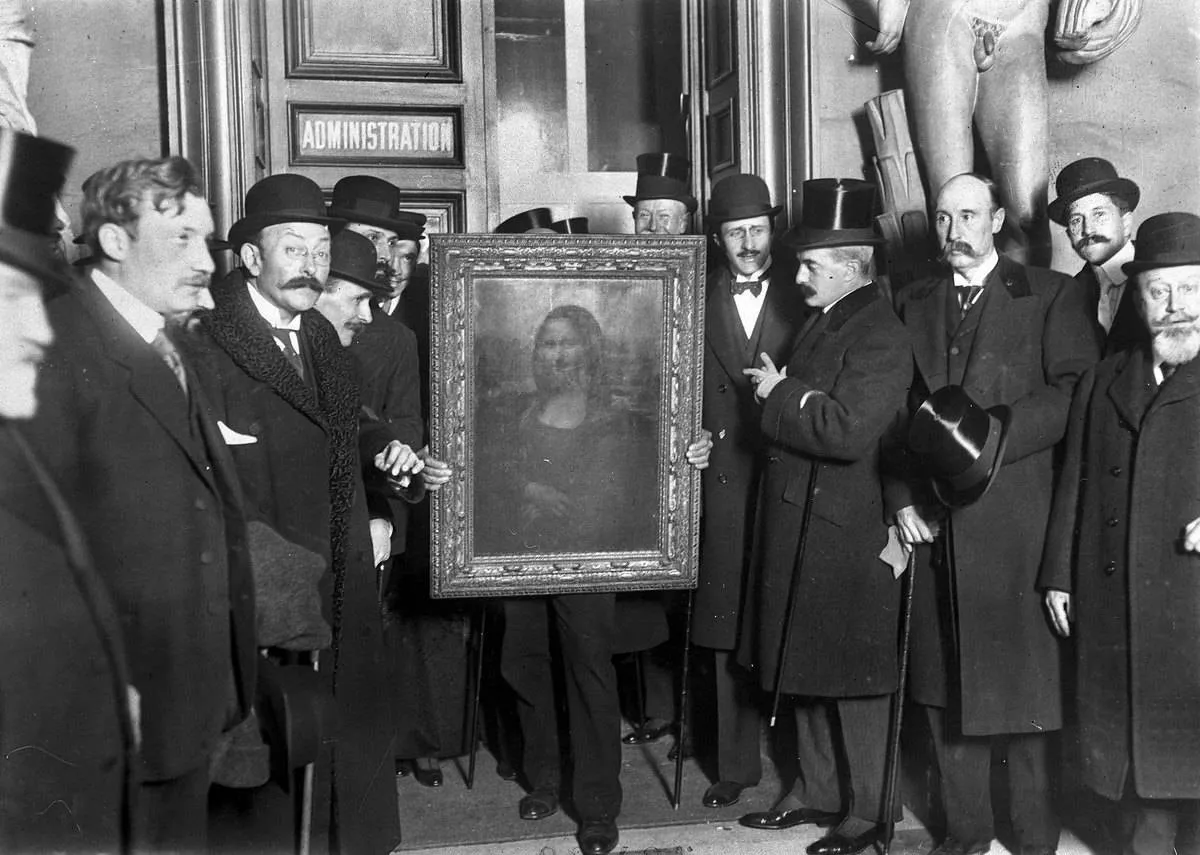
After World War I, da Vinci's Mona Lisa was returned to the Louvre. The Mona Lisa was stolen from the Louvre on August 21, 1911. The museum was closed for an entire week during the investigation. Both the French poet Guillaume Apollinaire, and his friend, the artist Pablo Picasso, were brought in for questioning. Two years later, the real thief revealed himself and the painting was brought back.
After two years, the real thief, Vincenzo Peruggia, revealed himself. He was an Italian patriot who believed da Vinci’s painting should be returned to Italy to be displayed in a museum there.
Tolstoy Tells A Story
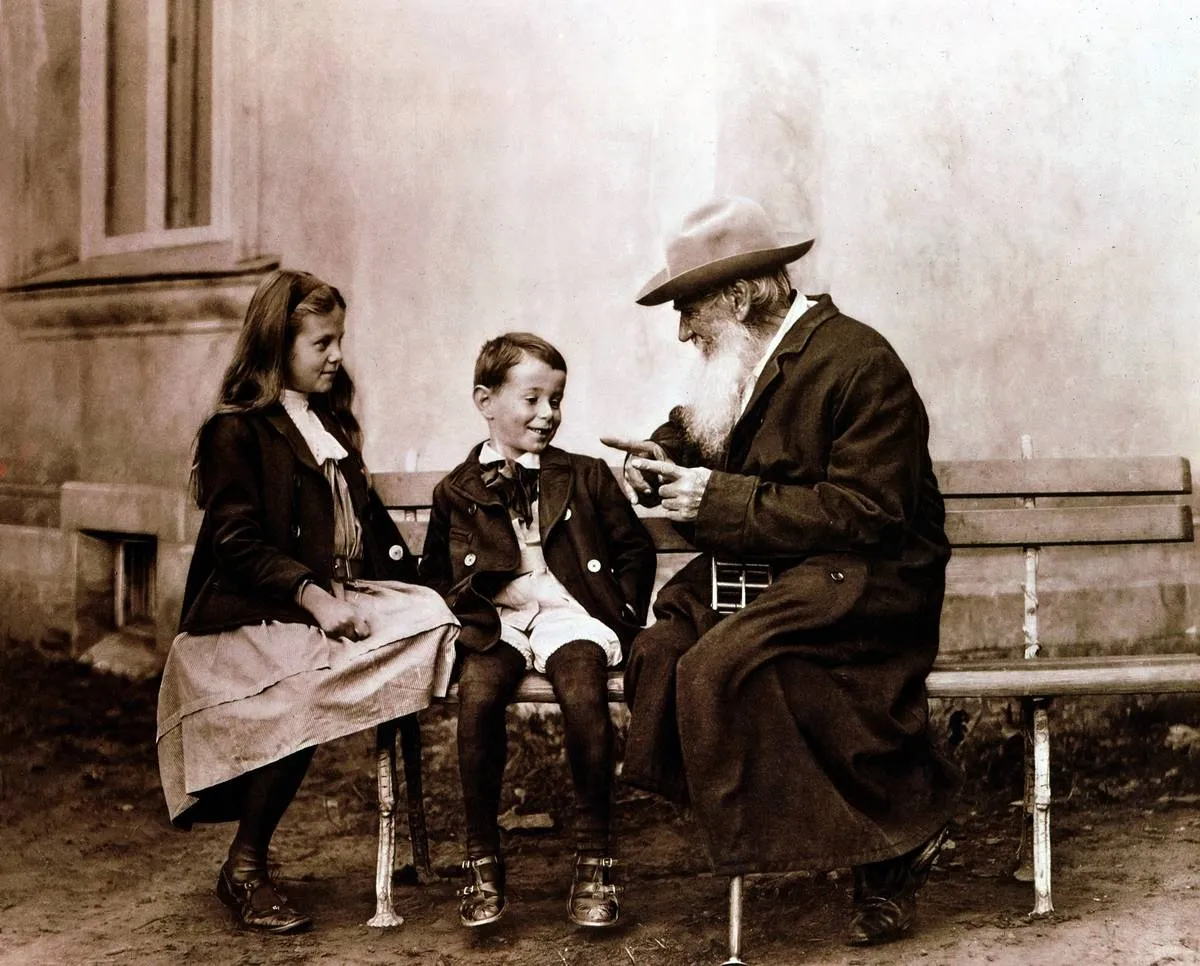
Here's Leo Tolstoy telling a story to his grandchildren in 1909. Hopefully, the story was a little bit shorter than War and Peace. Tolstoy had a large family. The Russian author married Sophia Andreyevna Behrs in 1862 when she was 16 years his junior. Together, they had 13 children, eight of whom survived childhood.
He also had six grandchildren, five of whom were his son Illya Tolstoy’s children: Anna Tolstoy, Illya Jr. Tolstoy, Andrei Tolstoy, Vera Tolstoy, and Mikhail Tolstoy. Tatyana Sukhotina was the daughter of Tatiana Sukhotina-Tolstaya. This quiet family moment shows a different side of the serious, classic author.
What Lovely Eyes You Have, My Dear
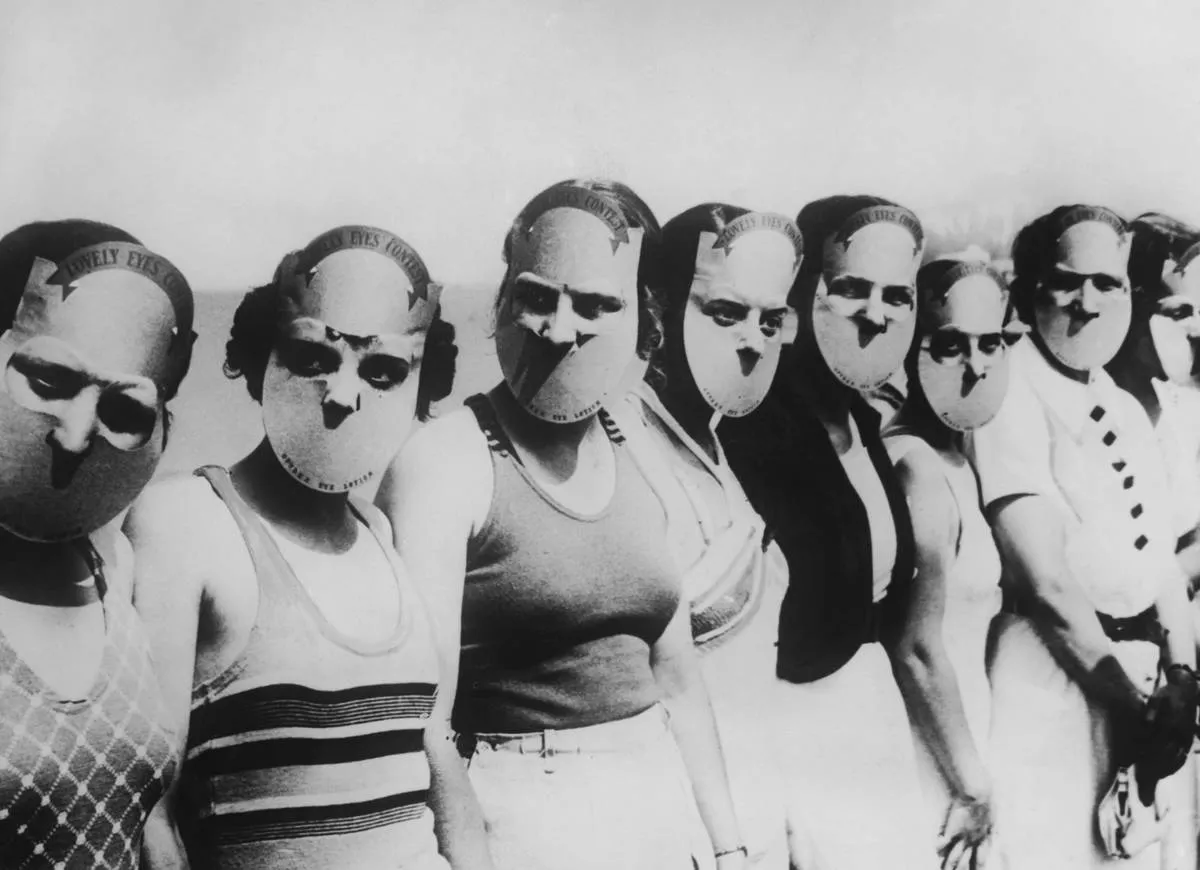
No, this isn't a still from a horror film. These bizarrely-dressed women were participants of the Miss Lovely Eyes competition in Florida held in 1930. The purpose of the nightmare-inducing Hannibal Lecter masks was to block out all the contestants’ other features so the judges could focus entirely on their eyes.
In the 1930s, bizarre beauty pageants were fairly common. At other Lovely Eyes competitions, women obscured their features with everything from ridiculous Abraham Lincoln hats that fell down to their chins and had holes cut out, to pieces of paper, swatches of fabric, and colorful bandannas. Somehow, we’re not any less disturbed.
What A Moment

This photo shows an airman being captured by Vietnamese in Trúc Bạch Lake, Hanoi in 1967. The absolutely amazing thing is that the airman is John McCain. While McCain was flying an attack aircraft carrier he was shot down over Hanoi. He was a prisoner of war for five and a half years and wasn't released until 1973 when the Paris Peace Accords were signed.
He became a celebrity after his return, and the story of how he refused an offer of early release because it would mean leaving before other prisoners who had been held longer showed his bravery to the world.
Tiger, Tiger

This is the last known Tasmanian tiger, also known as a thylacine or Tasmanian wolf. The species is now extinct, but this Tasmanian tiger was photographed in 1933. It is so very sad when humans allow this to happen. Surviving evidence suggests this animal was shy and nocturnal, with the appearance of a medium to large dog. It also had a pouch like a kangaroo. It's closest living relatives may be the Tasmanian devil or the numbat.
Competition from invasive dingoes and indigenous humans hurt the Tasmanian tiger’s numbers as far back as 2,000 years ago in mainland Australia. The species survived until the 1930s on the island of Tasmania.
Smokebot
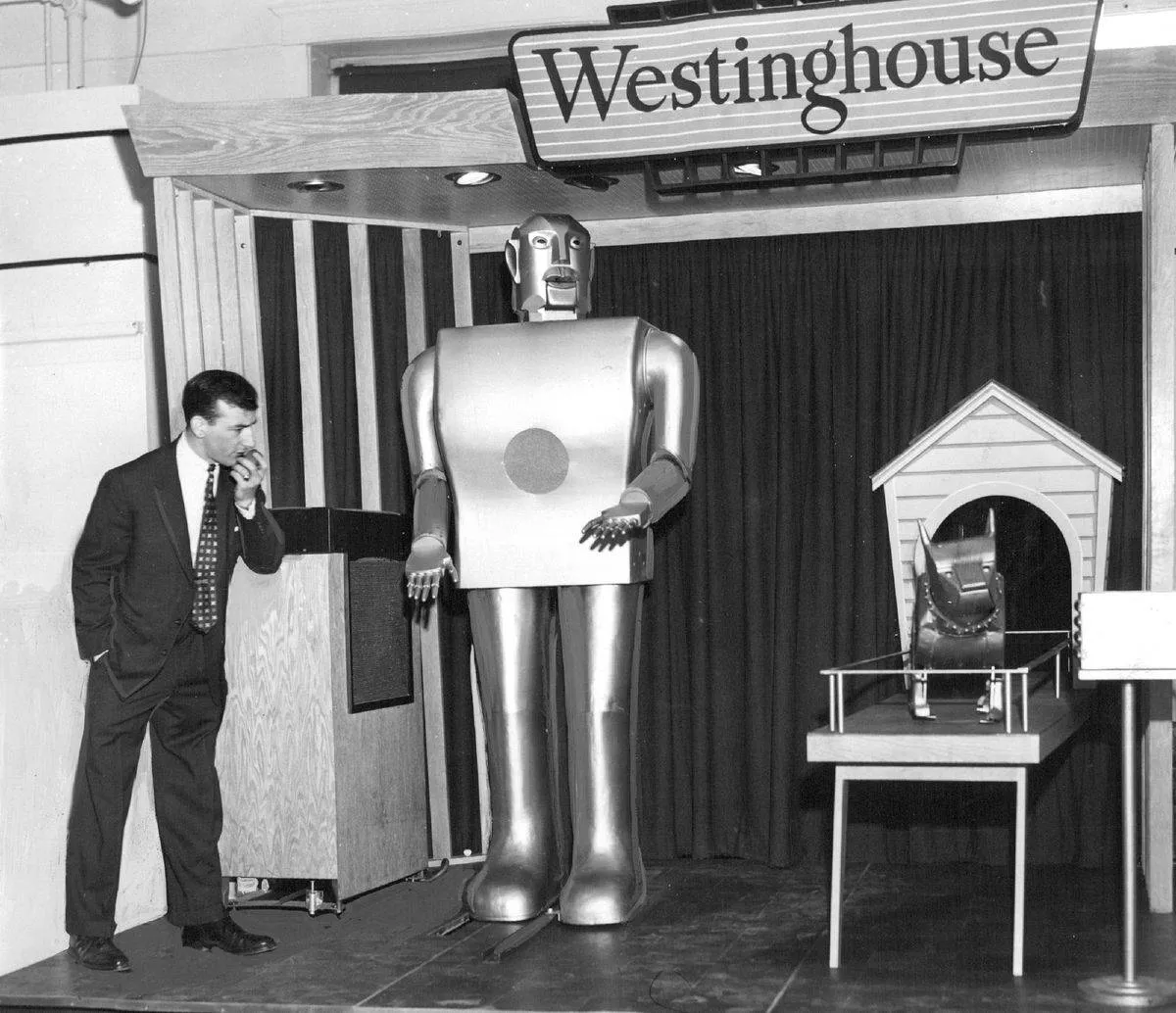
Retro technology at its finest! The Westinghouse Electric Corporation actually made a smoking robot in the 1930s. His name was Elektro — how modern. In addition to puffing on cigarettes, Elektro could speak about 700 words (thanks to a 78-rpm record player, blow up balloons, and move his head and arms. His eyes could also distinguish red and green light.
Elektro made his big debut at the 1938 New York World's Fair and reappeared the next year with Sparko, a robot dog that could bark, sit, and beg. This robot is currently retired at the Mansfield Memorial Museum.
WTC

Building the World Trade Center in New York City, 1970. The original WTC was a large complex of seven buildings in Lower Manhattan, New York City. It was destroyed in the September 11, 2001 terror attacks.
At the time the original 1 World Trade Center was built at 1,368 feet, it was the tallest building in the world. The total construction cost was $400 million (which is $2,300,000,000 in today's money). Before the devastating attacks in 2001, the building was also bombed in 1993. The new One World Trade Center, rebuilt after the tragedy, is the tallest building in the United States.
Dinosaurs
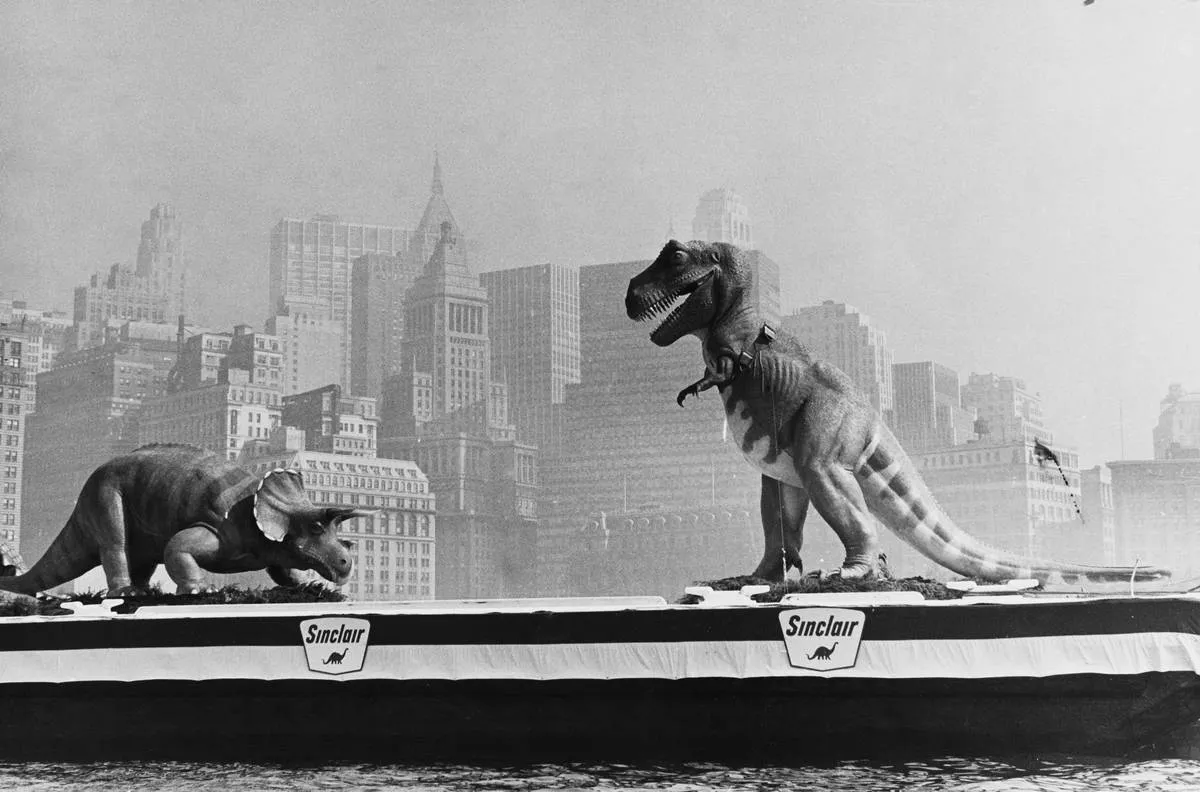
From the 1964 New York World's Fair: the Sinclair Oil Corporation sponsored an exhibit called "Dinoland," which featured life-size replicas of nine different dinosaurs that were shipped via barge down the Hudson River.
Louis Paul Jonas, a famed designer, was behind the nine fiberglass dinosaurs that inhabited Dinoland. Jonas also designed dioramas for prestigious museums, including the Yale Peabody Museum of Natural History, and the Berkshire Museum. Two of the dinos were mechanized: the nineteen-foot-tall Tyrannosaurus and the Brontosaurus. He also did his homework, enlisting famed paleontologists to make sure Dinoland was as accurate as possible for the time.
Historical Breakthroughs In Science!

Here's physicist and inventor Nikola Tesla in his workshop. An online campaign recently raised $2.2 million to buy this space and convert it into a museum dedicated to the scientist. The Serbian-American inventor, mechanical engineer, physicist, and futurist is best known for his contributions to the modern alternating current electricity supply system.
He may have been brilliant in some areas, but Tesla also had some pretty out-there beliefs. Tesla was a proponent of imposed selective breeding (otherwise known as another form of eugenics). At the same time, he believed women would become the dominant sex in the future and supported struggles for gender equality. What a strange contradiction.
Survival Town
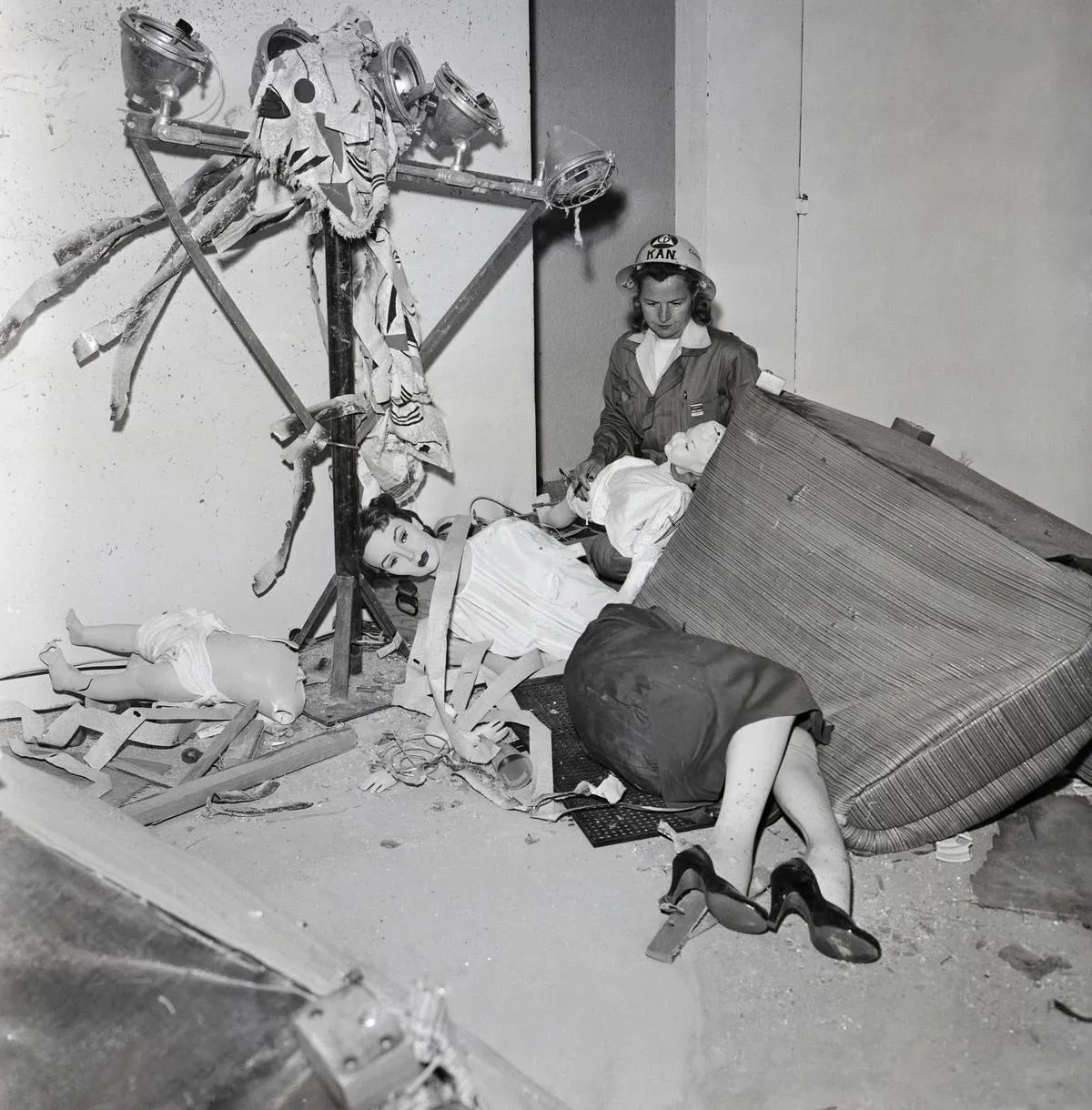
When the U.S. government was conducting nuclear tests in the 1950s, they constructed a town of mannequins. This was done for the sole purpose of find out out what would happen to them if the big bomb were to drop.
The eerie mannequin tests were carefully set up for the sole purpose of being destroyed, and they often were staged just like people enjoying dinner with their family, watching television, or children playing outside. The Nevada test site, known as "Survival Town" is now open for tours. Tests ended in the early 1990s, which wasn't so long ago at all.
Strongman
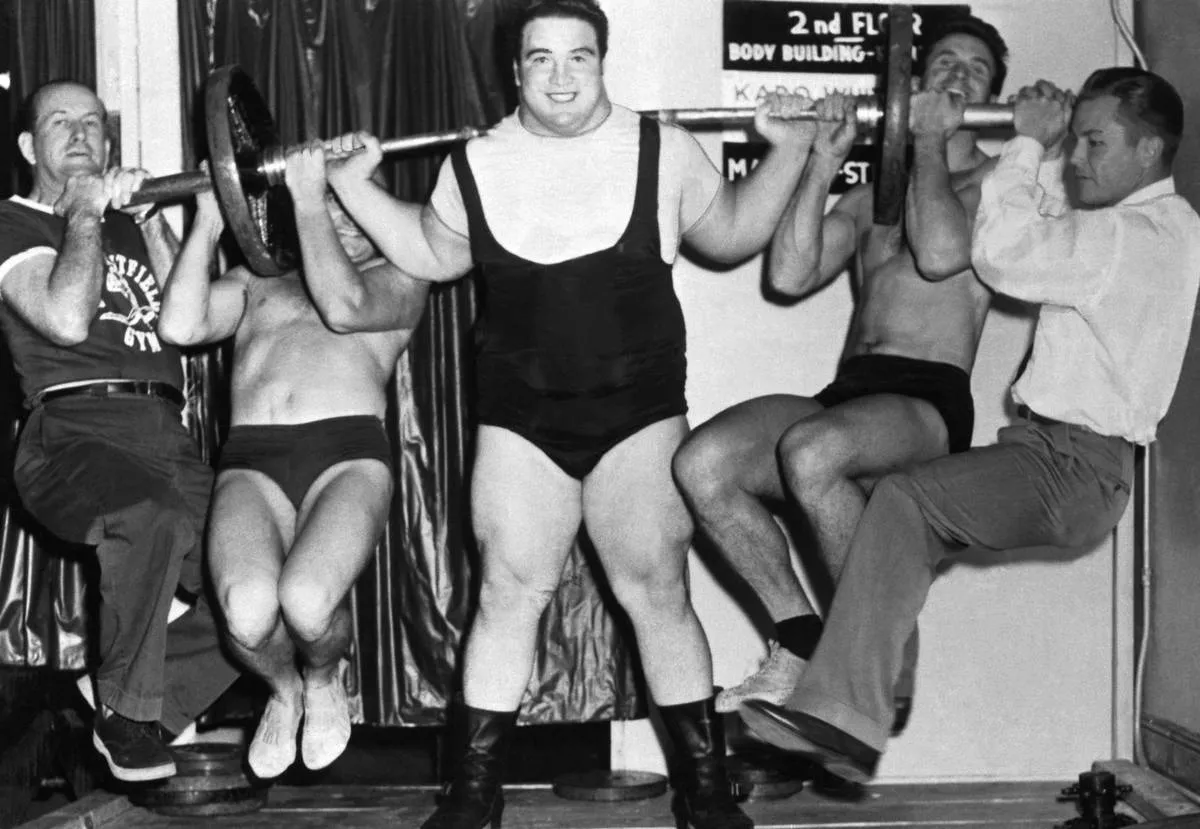
In 1957 Paul Anderson lifted 6,270 pounds, using his legs and back. Paul was an Olympic gold medalist, World Champion and two-time National Champion in Olympic weightlifting champ. Anderson was considered a major part of the popularity of power-lifting and its recognition as a competitive sport.
He didn't get so strong at some fancy gym. In high school, Paul Anderson used homemade weights that his father created out of concrete poured into a wood form. Sadly, Anderson suffered from Bright’s Disease (which we now call chronic nephritis). The kidney disorder took his life at age 61 on August 15, 1994.
Historical Photo Of The Circus
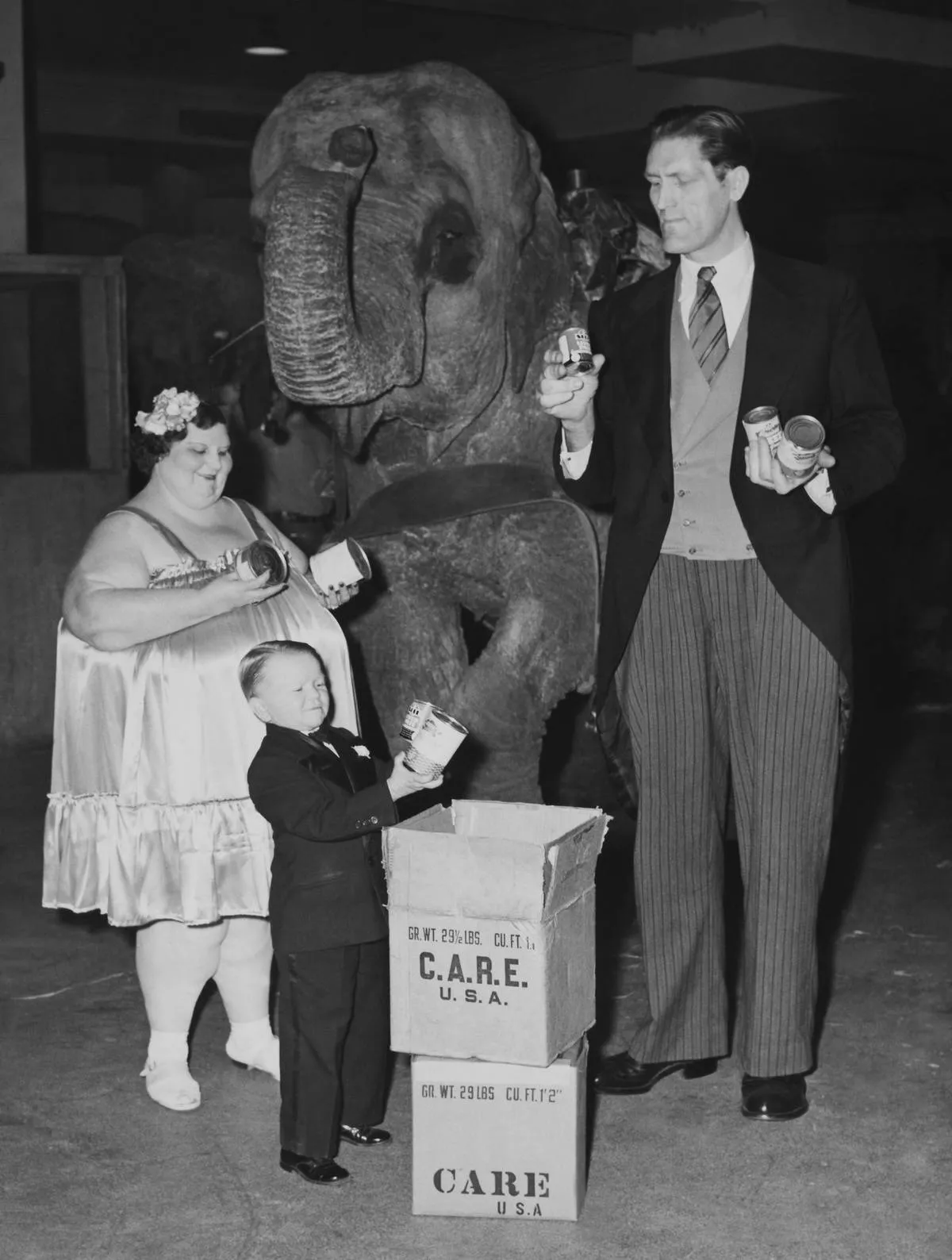
These are performers with Ringling Brothers and Barnum and Bailey's Circus in 1948. All of the Ringling Brothers elephants have now been officially retired from show business after outcry from animal rights activists about their horrific treatment.
Freak shows were popular in the early 1900s and often featured outright shams or people who simply had medical conditions. Sometimes people with physical deformities or who were considered "exotic" in some way were kidnapped to perform. Some performers, like Schlitzie and Koo-Koo the Bird Girl, performed not only for Barnum & Bailey but in major motion pictures like Freaks.
Rasputin Gets Colorized

This chilling photograph of Rasputin was recently colorized, seemingly bringing the Russian mystic to life almost 101 years after his murder. Rasputin was a self-proclaimed holy man who gained influence over the country after he became close with the family of Emperor Tsar Nichols II.
When his influence was deemed too powerful, a group of nobles murdered Rasputin with a close-range gunshot to his forehead. When you see Rasputin's hypnotizing blue eyes brought to life, it's easy to see how he won over the dynasty.
The Tattooed Texan
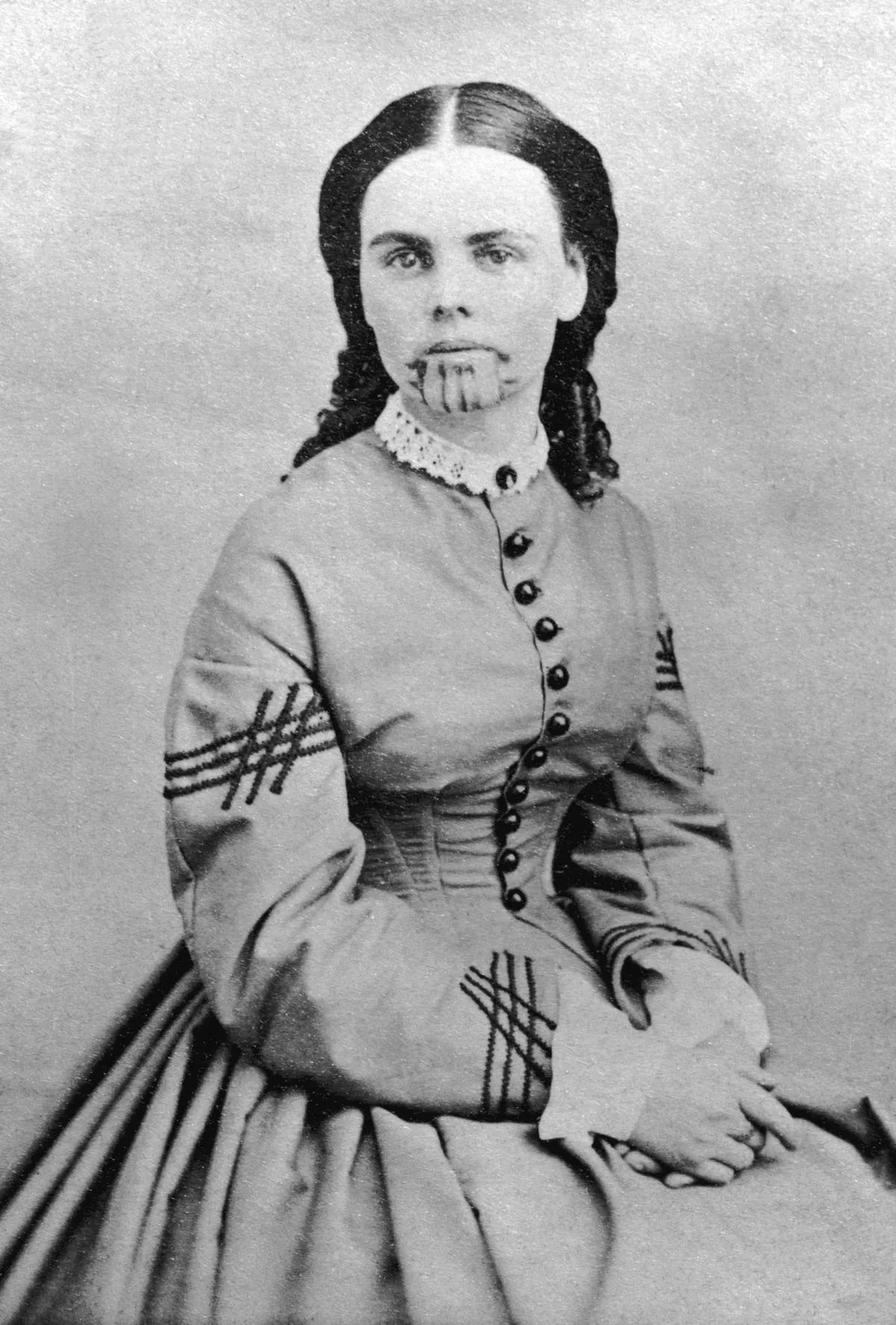
The story behind this photograph of Olive Oatman is hard to believe. Roy Oatman took his wife and seven children on a perilous journey from Illinois to California—but he didn't realize the trip would claim nearly all of their lives.
As the Oatmans traveled through Arizona, they were attacked by members of the Yavapais tribe. Only three of the children survived, including 13-year-old Olive who was forced into slave labor. The Yavapais eventually traded Olive to a Mohave tribe, where she was considered family and was even tattooed to identify her as a tribal member. When the U.S. government discovered a white woman was living with a Mohave tribe, they stepped in to rescue her, despite her desire to stay. Olive was returned to live among the white settlers in Texas, although her facial tattoos were a constant reminder of the life she grew to love and left behind.









